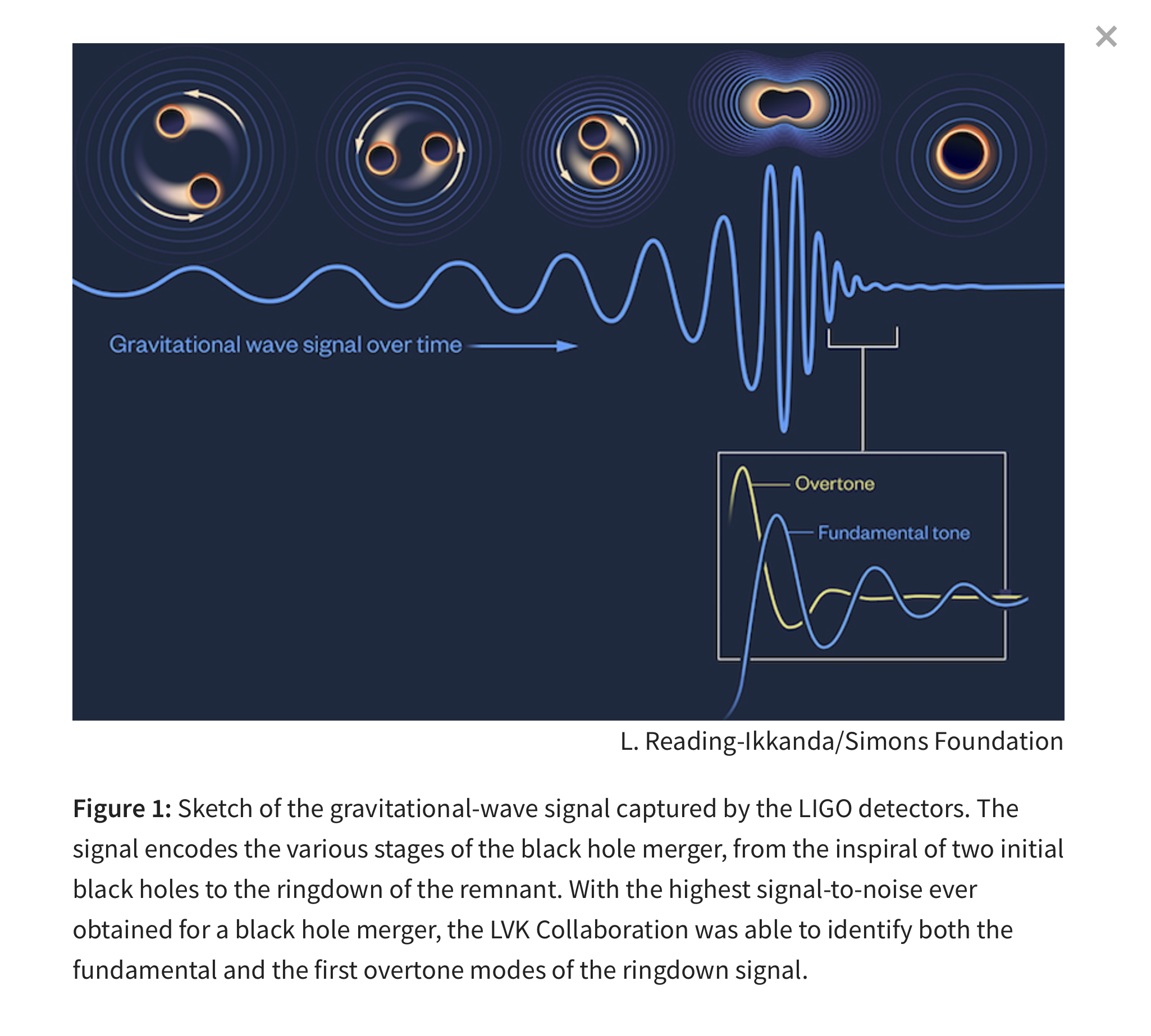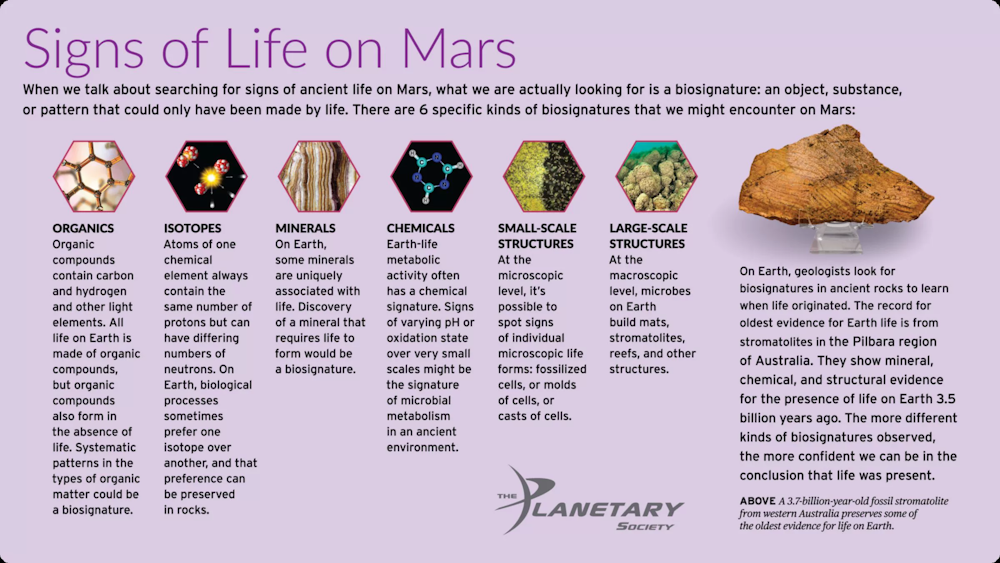Mike Meetz and Sam Wormley team up to provide a lively
discussion with OLLI members about Science In The News.
A deep understanding of science is not required to share
and discuss recent Science In The News. Neil deGrasse Tyson
on Scientific Literacy.
LATEST NEWS
https://www.sciencealert.com https://www.sciencealert.com
https://phys.org https://sciurls.com/?q=phys
https://www.nature.com https://sciurls.com/?q=nature
https://www.nytimes.com/science https://sciurls.com/?q=nytimes%20science
https://www.quantamagazine.org https://sciurls.com/?q=quantamagazine
https://www.sciencenews.org https://sciurls.com/?q=sciencenews
https://www.scientificamerican.com https://sciurls.com/?q=scientificamerican
OLLI Science in the News & Your recommendations
For 9/18/2025
⓵ LANDMARK BLACK HOLE TEST MARKS DECADE OF GRAVITATIONAL-WAVE DISCOVERIES
https://physics.aps.org/articles/v18/160
https://dnyuz.com/2025/09/10/happy-birthday-ligo-now-drop-dead/
Summary
The LIGO-Virgo-KAGRA (LVK) Collaboration has detected the
clearest black hole merger signal ever recorded, GW250114.
This signal allowed researchers to confirm the Kerr nature of
the merging black holes and validate Stephen Hawking's black
hole area theorem. The detection of overtones in the ringdown
signal provided a robust test of these theories, setting a
new standard for gravitational-wave astronomy.
 ⓶ THESE SPOTS COULD SIGNAL LIFE ON MARS – AN ASTROBIOLOGIST EXPLAINS WHY
https://www.sciencealert.com/these-spots-could-signal-life-on-mars-an-astrobiologist-explains-why
Summary
The Perseverance rover discovered a unique rock sample,
Sapphire Canyon, in Mars' Jezero Crater containing two
iron-rich minerals, vivianite and greigite, arranged in a
distinctive pattern. These minerals, associated with life on
Earth, suggest potential microbial activity on Mars.
Scientists are investigating whether these minerals formed
through biological processes or non-biological chemical
reactions.
⓶ THESE SPOTS COULD SIGNAL LIFE ON MARS – AN ASTROBIOLOGIST EXPLAINS WHY
https://www.sciencealert.com/these-spots-could-signal-life-on-mars-an-astrobiologist-explains-why
Summary
The Perseverance rover discovered a unique rock sample,
Sapphire Canyon, in Mars' Jezero Crater containing two
iron-rich minerals, vivianite and greigite, arranged in a
distinctive pattern. These minerals, associated with life on
Earth, suggest potential microbial activity on Mars.
Scientists are investigating whether these minerals formed
through biological processes or non-biological chemical
reactions.
 ⓷ TEAM DISCOVERS POTENTIAL BACTERIAL SOLUTION TO 'FOREVER' CHEMICALS
https://phys.org/news/2025-09-team-potential-bacterial-solution-chemicals.html
https://pubs.rsc.org/en/content/articlehtml/2025/va/d5va00106d
Summary
University of Nebraska-Lincoln researchers discovered that
the bacterium Rhodopseudomonas palustris can absorb
perfluorooctanoic acid (PFOA), a persistent PFAS chemical.
While the bacterium removed 44% of PFOA in 20 days, much was
later released, indicating the need for further research.
This finding suggests a potential for using microbes to break
down PFAS, offering hope for cleaner water and a healthier
environment.
⓸ MYSTERIOUS 'RED DOTS' IN EARLY UNIVERSE MAY BE 'BLACK HOLE STAR' ATMOSPHERES
https://phys.org/news/2025-09-mysterious-red-dots-early-universe.html
Summary
Mysterious "little red dots" discovered by NASA's James Webb
Space Telescope may be a new type of celestial object: black
hole stars. These objects, powered by supermassive black
holes, are surrounded by dense spheres of hot gas, giving
them the appearance of cold stars. This discovery challenges
previous understanding of galaxy formation and the origins of
supermassive black holes.
⓷ TEAM DISCOVERS POTENTIAL BACTERIAL SOLUTION TO 'FOREVER' CHEMICALS
https://phys.org/news/2025-09-team-potential-bacterial-solution-chemicals.html
https://pubs.rsc.org/en/content/articlehtml/2025/va/d5va00106d
Summary
University of Nebraska-Lincoln researchers discovered that
the bacterium Rhodopseudomonas palustris can absorb
perfluorooctanoic acid (PFOA), a persistent PFAS chemical.
While the bacterium removed 44% of PFOA in 20 days, much was
later released, indicating the need for further research.
This finding suggests a potential for using microbes to break
down PFAS, offering hope for cleaner water and a healthier
environment.
⓸ MYSTERIOUS 'RED DOTS' IN EARLY UNIVERSE MAY BE 'BLACK HOLE STAR' ATMOSPHERES
https://phys.org/news/2025-09-mysterious-red-dots-early-universe.html
Summary
Mysterious "little red dots" discovered by NASA's James Webb
Space Telescope may be a new type of celestial object: black
hole stars. These objects, powered by supermassive black
holes, are surrounded by dense spheres of hot gas, giving
them the appearance of cold stars. This discovery challenges
previous understanding of galaxy formation and the origins of
supermassive black holes.
 Related Material from some recent OLLI cources
http://edu-observatory.org/olli/classes.html#CURRENT
Alan Lightman On Richard Feynman's Amazing Mind, Or How
"Hawking Radiation" Could Well Be "Feynman Radiation" (6+ min)
https://player.vimeo.com/video/104516539
sam.wormley@icloud.com
Related Material from some recent OLLI cources
http://edu-observatory.org/olli/classes.html#CURRENT
Alan Lightman On Richard Feynman's Amazing Mind, Or How
"Hawking Radiation" Could Well Be "Feynman Radiation" (6+ min)
https://player.vimeo.com/video/104516539
sam.wormley@icloud.com
⓶ THESE SPOTS COULD SIGNAL LIFE ON MARS – AN ASTROBIOLOGIST EXPLAINS WHY https://www.sciencealert.com/these-spots-could-signal-life-on-mars-an-astrobiologist-explains-why Summary The Perseverance rover discovered a unique rock sample, Sapphire Canyon, in Mars' Jezero Crater containing two iron-rich minerals, vivianite and greigite, arranged in a distinctive pattern. These minerals, associated with life on Earth, suggest potential microbial activity on Mars. Scientists are investigating whether these minerals formed through biological processes or non-biological chemical reactions.
⓷ TEAM DISCOVERS POTENTIAL BACTERIAL SOLUTION TO 'FOREVER' CHEMICALS https://phys.org/news/2025-09-team-potential-bacterial-solution-chemicals.html https://pubs.rsc.org/en/content/articlehtml/2025/va/d5va00106d Summary University of Nebraska-Lincoln researchers discovered that the bacterium Rhodopseudomonas palustris can absorb perfluorooctanoic acid (PFOA), a persistent PFAS chemical. While the bacterium removed 44% of PFOA in 20 days, much was later released, indicating the need for further research. This finding suggests a potential for using microbes to break down PFAS, offering hope for cleaner water and a healthier environment. ⓸ MYSTERIOUS 'RED DOTS' IN EARLY UNIVERSE MAY BE 'BLACK HOLE STAR' ATMOSPHERES https://phys.org/news/2025-09-mysterious-red-dots-early-universe.html Summary Mysterious "little red dots" discovered by NASA's James Webb Space Telescope may be a new type of celestial object: black hole stars. These objects, powered by supermassive black holes, are surrounded by dense spheres of hot gas, giving them the appearance of cold stars. This discovery challenges previous understanding of galaxy formation and the origins of supermassive black holes.
Related Material from some recent OLLI cources http://edu-observatory.org/olli/classes.html#CURRENT Alan Lightman On Richard Feynman's Amazing Mind, Or How "Hawking Radiation" Could Well Be "Feynman Radiation" (6+ min) https://player.vimeo.com/video/104516539 sam.wormley@icloud.com